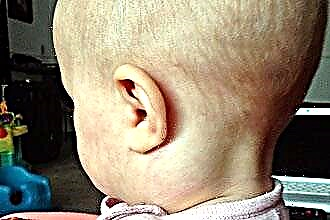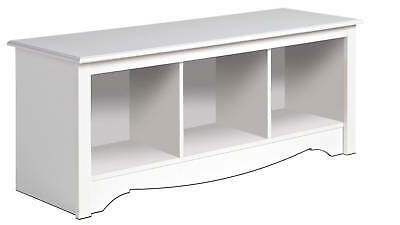Internal otitis media is an inflammation of the ear labyrinth, which consists of a spiral (cochlea) and semicircular canals. The coordination of movements and the spatial orientation of a person depend on the correct functioning of the mutually perpendicular semicircular canals. Due to dysfunction of the vestibular apparatus located in the inner ear, the patient feels constant nausea, dizziness and malaise. Timely pharmacological and surgical treatment of labyrinthitis prevents the transition of ENT disease into a chronic form.
The structure of the inner ear

The inner ear of a person is located in the region of the temporal bone, so its direct infection is almost impossible. Diseases associated with it account for only 3% of all types of ear pathologies. The labyrinth is a complex organ that looks like a twisted spiral. It consists of bone and membranous tissue, between which there is fluid (perilymph).
The bone labyrinth consists of 3 sections, namely:
- snails are a spiral structure that outwardly resembles the shell of a gastropod mollusk. The cochlea contains sound-perceiving cells, damage to which leads to partial or complete deafness;
- semicircular canals - three main components of the labyrinth, which are located in mutually orthogonal planes. They contain the receptors of the vestibular analyzer, thanks to which the balance of the body is controlled;
- vestibule - expansion, which is located between the semicircular canals and the spiral. It contains specific solid formations (otoliths) that resemble crystals. They are one of the components of the organ of balance, therefore they are responsible for the spatial orientation of a person.
The correct assessment of symptoms and subsequent treatment of internal otitis media is carried out by an otolaryngologist and only after preliminary diagnosis. The development of inflammatory processes in the ear labyrinth is signaled by specific clinical manifestations: vomiting, dizziness, disorientation in space. They arise as a result of an infectious lesion or injury to the receptor apparatus, which leads to the appearance of vestibular failures, sound hallucinations and hearing loss.
Pathogenesis
Typical symptoms of inner ear inflammation appear due to toxic, mechanical or infectious damage to the structures of the ear labyrinth. In the vestibule there are small windows, which are composed of connective tissue. It is she who is the border between the labyrinth and the tympanic cavity, which is the main section of the middle ear.
With catarrhal inflammation of the middle ear, infiltration of connective tissues is observed, as a result of which the permeability of the membranes increases. This leads to the unhindered spread of pathogens within the cochlea and semicircular canals. As a result, serous inflammation occurs in the inner ear with the production of liquid exudate. The increase in fluid volume leads to an increase in internal pressure in the labyrinth, which leads to perforation of the connecting membranes and the unhindered spread of pathogens.
The following types of microorganisms are among the main provocateurs of inflammation and manifestations of symptoms of labyrinthitis:
- Streptococcus Pneumoniae;
- Moraxella Catarrhalis;
- bacteria of tuberculosis;
- herpes and flu virus;
- haemophilus influenzae;
- staphylococci.
Pathology develops as a result of a sharp decrease in immunity. Otitis media, chronic infections, vitamin deficiency, stress, endocrine disorders can provoke malfunctions of the immune system.
Clinical manifestations
The main symptom of inner ear otitis media is auditory and vestibular dysfunction. The severity of the clinical manifestations of ENT disease is determined by the rate of spread of catarrhal processes in the soft and bone tissues of the labyrinth. In the initial stages of the development of labyrinthitis, patients complain of:
- nausea and vomiting;
- hearing impairment;
- auditory hallucinations;
- increased sweating;

- cardiopalmus.
With damage to the vagus nerve, nystagmus may develop, i.e. arbitrary accelerated eye movement.
Sharp body movements and head turns lead to an increase in the severity of symptoms of internal otitis media. With the development of an acute form of labyrinthitis, dizziness may not stop for several hours, with a chronic disease - for several days.
Untimely treatment of the disease is fraught with the rapid spread of lesions, which can lead to infection of the facial nerve trunk. It is located between the vestibule and the cochlea of the ear labyrinth, which significantly increases the risk of inflammation. In this case, signs of paresis are added to the main symptoms of labyrinthitis in adults:
- asymmetry of the tip of the nose;
- increased salivation;
- smoothing of the nasolabial fold;
- disruptions in taste;
- dry eyeball.
Only according to the results of preliminary diagnostics, it is possible to determine the extent of the spread of inflammation in the ear. For this, specialists use sighting radiography, MRI, audiometry, electronystagmography, etc.
Principles of therapy
The principles of treatment of pathologists depend on the severity of the course of catarrhal processes, the degree of damage to the tissues of the labyrinth and the presence of complications. Treatment of serous otitis media of the inner ear involves the use of conservative therapy, which is aimed at preventing the transition of the exudative stage of development of inflammation to purulent.
Comprehensive treatment of internal otitis media is based on the use of the following therapeutic measures:
- antibacterial therapy - eliminates pathogenic bacteria, which leads to the elimination of inflammation in the ear. For these purposes, broad-spectrum antibiotics are used, such as Cefazolin and Amoxicillin. Their components are active against most known microbial pathogens;
- dehydration therapy - helps to remove excess moisture from the body, thereby reducing the amount of
 serous exudate. Within the framework of therapy, a special diet, diuretics (Aldactone, Gigroton) and glucocorticosteroids (Beklat, Klenil) can be used;
serous exudate. Within the framework of therapy, a special diet, diuretics (Aldactone, Gigroton) and glucocorticosteroids (Beklat, Klenil) can be used; - drugs to improve tissue trophism - accelerate the process of epithelialization of the affected tissues, which leads to the restoration of the functions of the receptor apparatus. As effective drugs are used "Actovegin", "Dexpanthenol" and "Stisamet", as well as vitamins of group B, K and C;
- antiallergic therapy - allows you to stop the main manifestations of pathology, reduce vascular permeability and, accordingly, tissue edema. Among the best antihistamines are Loratadin, Suprastin and Erius.
If characteristic symptoms of labyrinthitis occur, the principles of treatment of the disease should be agreed with the ENT doctor. Self-medication entails a deterioration in well-being and the development of complications such as meningitis, sepsis, deafness, etc.


 serous exudate. Within the framework of therapy, a special diet, diuretics (Aldactone, Gigroton) and glucocorticosteroids (Beklat, Klenil) can be used;
serous exudate. Within the framework of therapy, a special diet, diuretics (Aldactone, Gigroton) and glucocorticosteroids (Beklat, Klenil) can be used;

